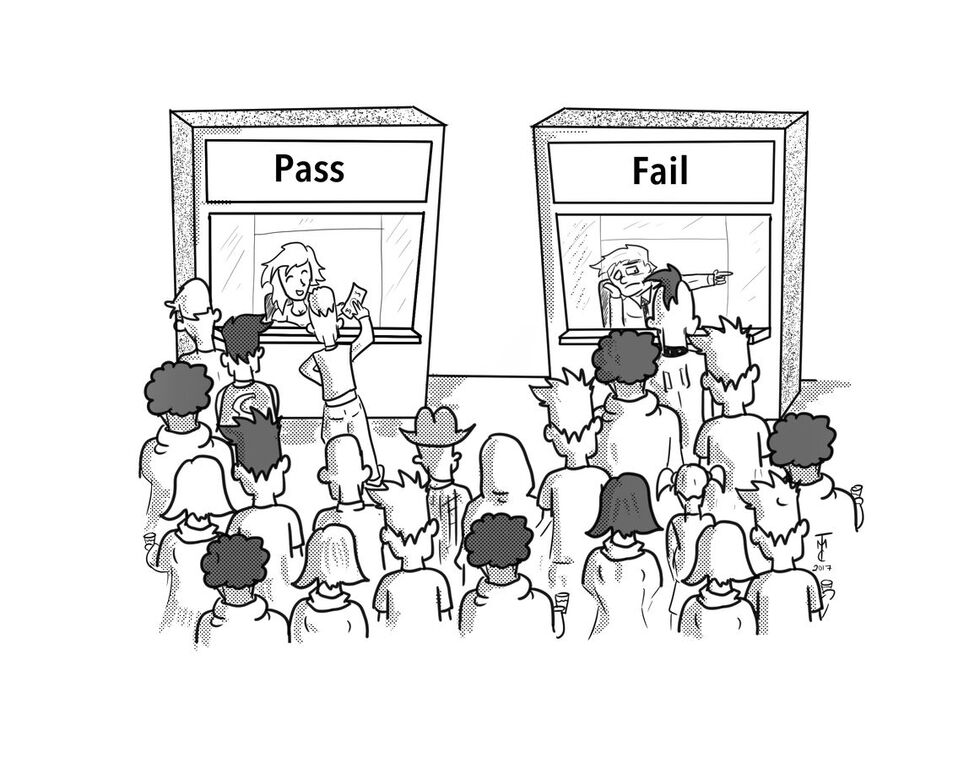
Illustration by Tyler Carpenter
Welfare reform is a constant staple of the campaigning politician, with those on the right wanting to create further restrictions on people seeking government assistance. One of the biggest arguments in recent years is the desire to implement required drug testing for anyone wanting to receive help. Here’s why drug testing welfare recipients doesn’t work.
First of all, these kinds of programs have already been implemented in multiple states, including the beehive state. Utah requires anyone applying for the Temporary Assistance to Needy Families program, the most common form of welfare, to fill out a questionnaire. The questions are designed to determine the likelihood of an individual to use drugs. If it’s determined there is a high likelihood, the applicant is required to take a drug test. If they take the test and it comes back positive, they can continue to receive welfare benefits on the condition that they go into a drug treatment program.
This program was implemented in 2012, and in the first three years 13,799 people applied for benefits. 2,666 were flagged as having a high probability for drug use. Of those people, 630 didn’t get tested and lost benefits. Only 47 of the remaining 2,036 people were found to have drugs in their system.
Lawmakers argue that drug testing welfare recipients will save the taxpayers money, but the exact opposite is true. Utah spent $93,000 to find only 47 drug users. The American Civil Liberties Union estimates that for each individual drug user discovered in the state of Kansas, it would cost roughly $20,000. This is because the state would be required to reimburse applicants who pass their drug tests for the cost of the test, which averages around $75. Florida implemented a welfare drug-testing law and only turned down 30 of the roughly 28,000 people that applied. That’s a lot of money to pay back.
Another issue is the racist undertones that many of these laws have. The targeted welfare programs, such as food stamps or unemployment, commonly benefit low-income groups, which are generally comprised of racial minorities. Where is the outcry for drug-testing recipients of federal PELL grants, which generally benefit middle and upper-class, i.e. white, groups? It’s funny how the moral character of PELL grant recipients is never called into question.
Furthermore, there is the small fact that these laws violate the Fourth Amendment. One such law was thrown out in Florida. In December of 2014, Judge Stanley Marcus concluded “citizens do not abandon all hope of privacy by applying for government assistance.” An earlier ruling was decided in 2003 in Michigan, when a federal appellate court threw out a random drug testing law, claiming that it violated the constitutional ban against unreasonable search and seizure.
Lastly, there is no evidence to support the popular claim that poor people have a higher rate of drug use than anyone else. In fact, the opposite seems to be true. Welfare applicants test positive for drugs at a lower rate than the national average. According to a survey by the National Institute on Drug Abuse, the national average for drug use was 9.4 percent in 2016. Drug use among welfare applicants ranged between .002 to 8.3 percent.
Rather than spend possible millions of taxpayer dollars on some hokey crusade to clean up our welfare program, legislators should instead put that money towards something that provides an actual benefit to those in need. With this money, Medicaid could be expanded to cover the roughly 93,000 Utahns who are unable to afford healthcare. Expanding Medicaid is just one example, but there are hundreds of programs that would greatly benefit from additional funding.









